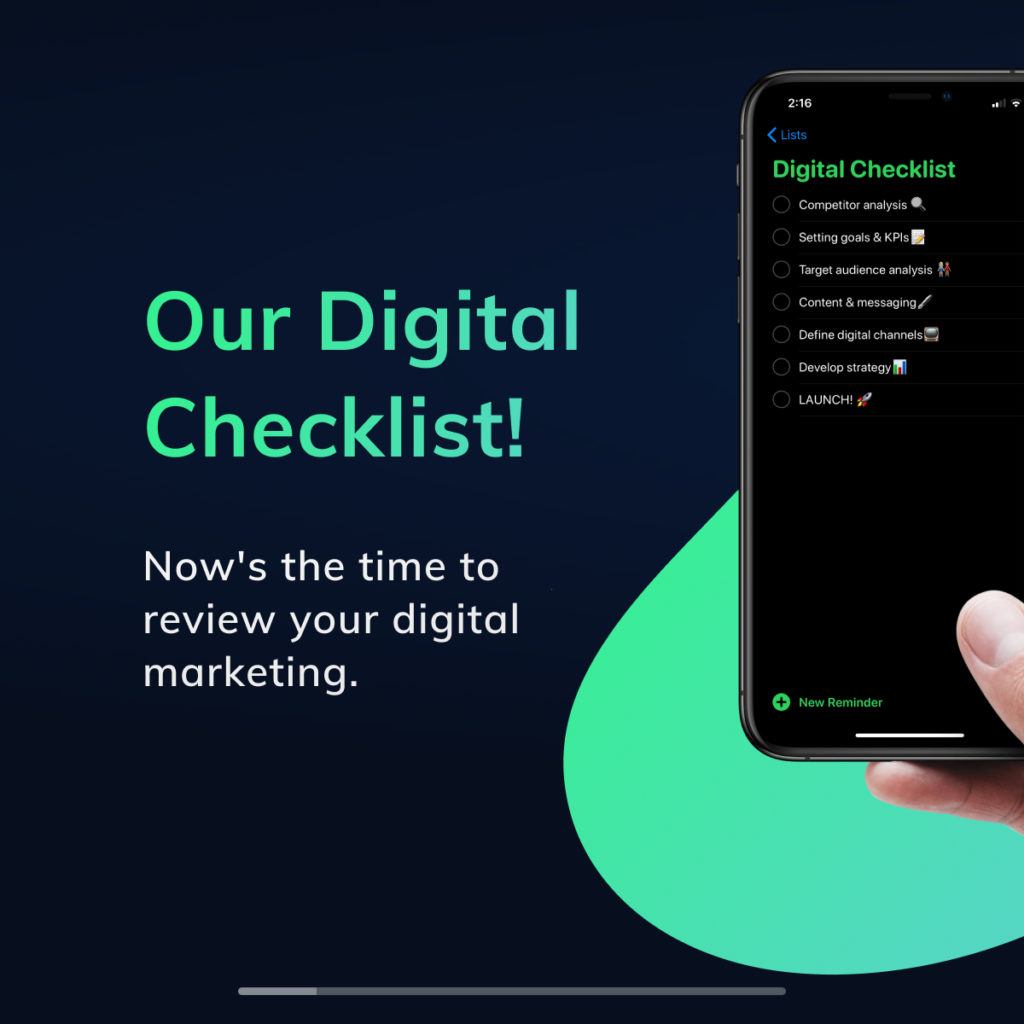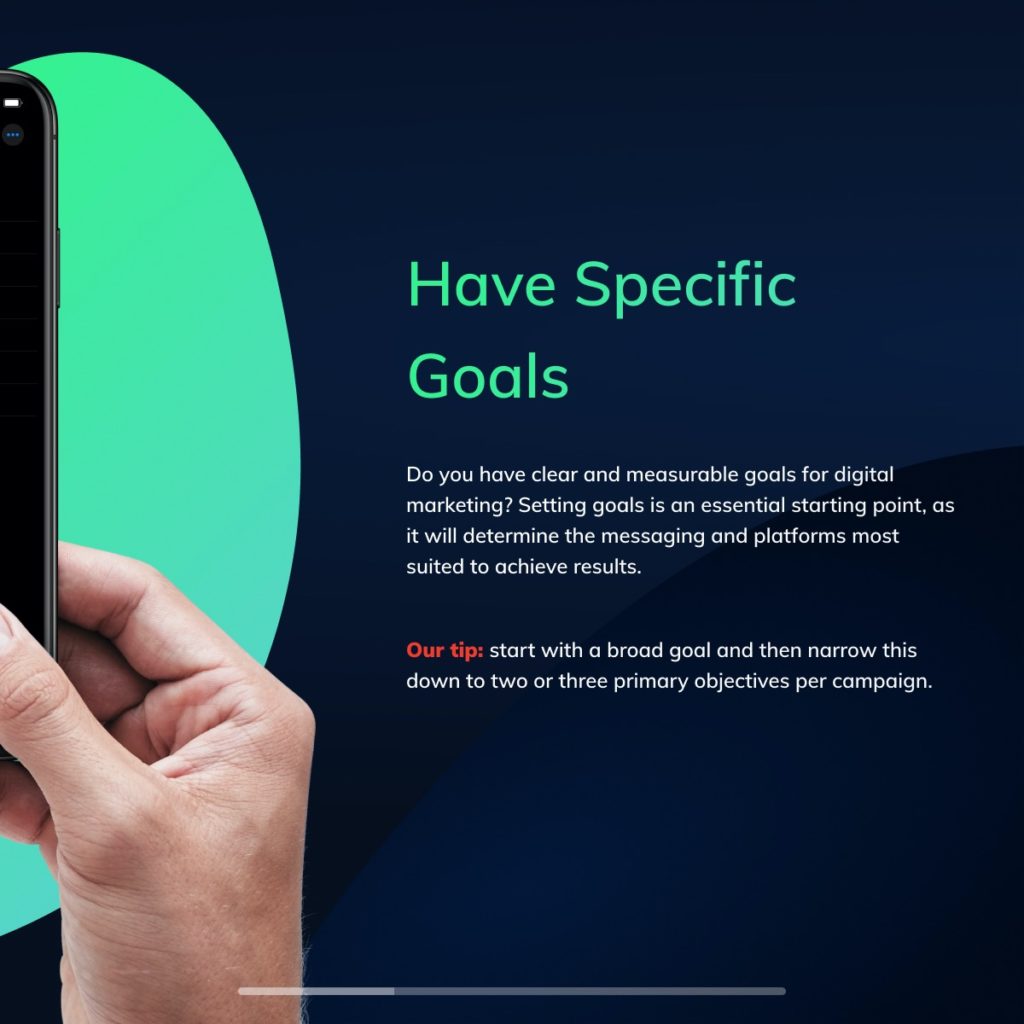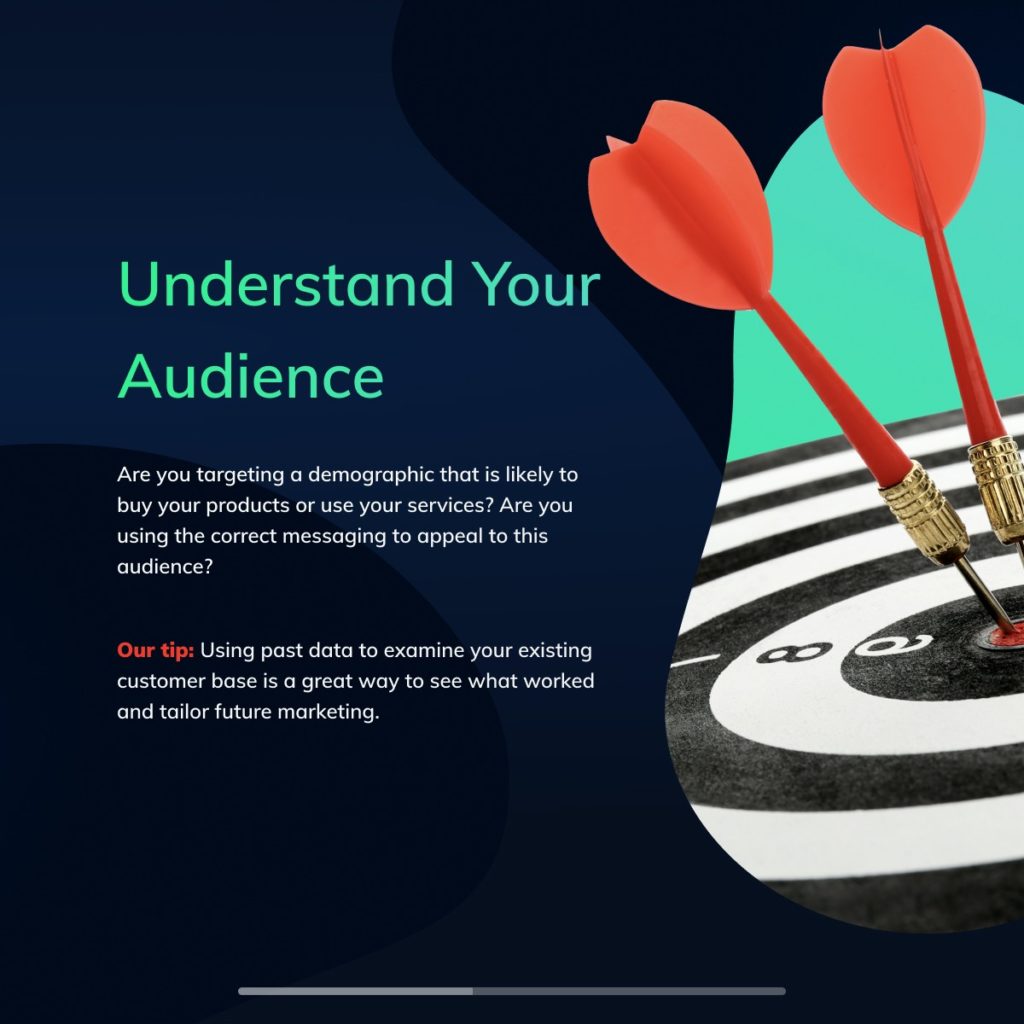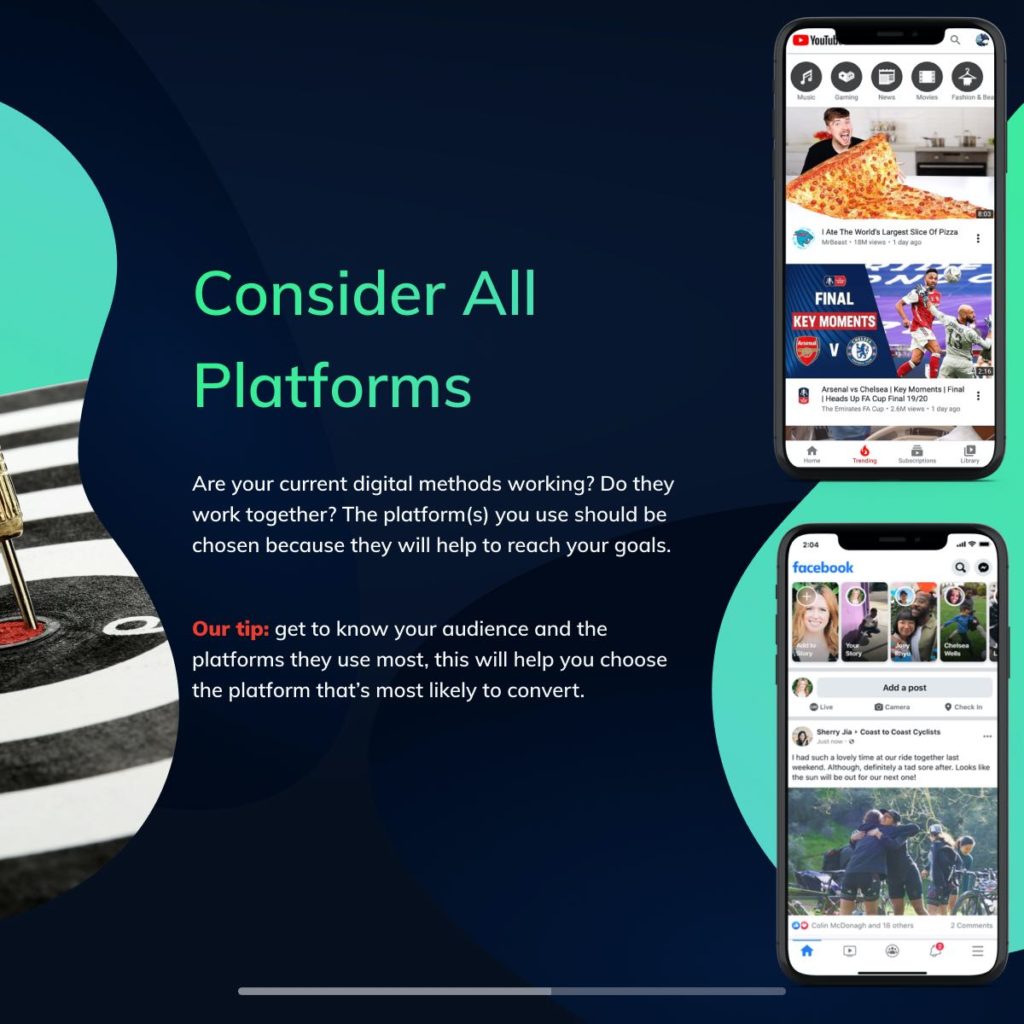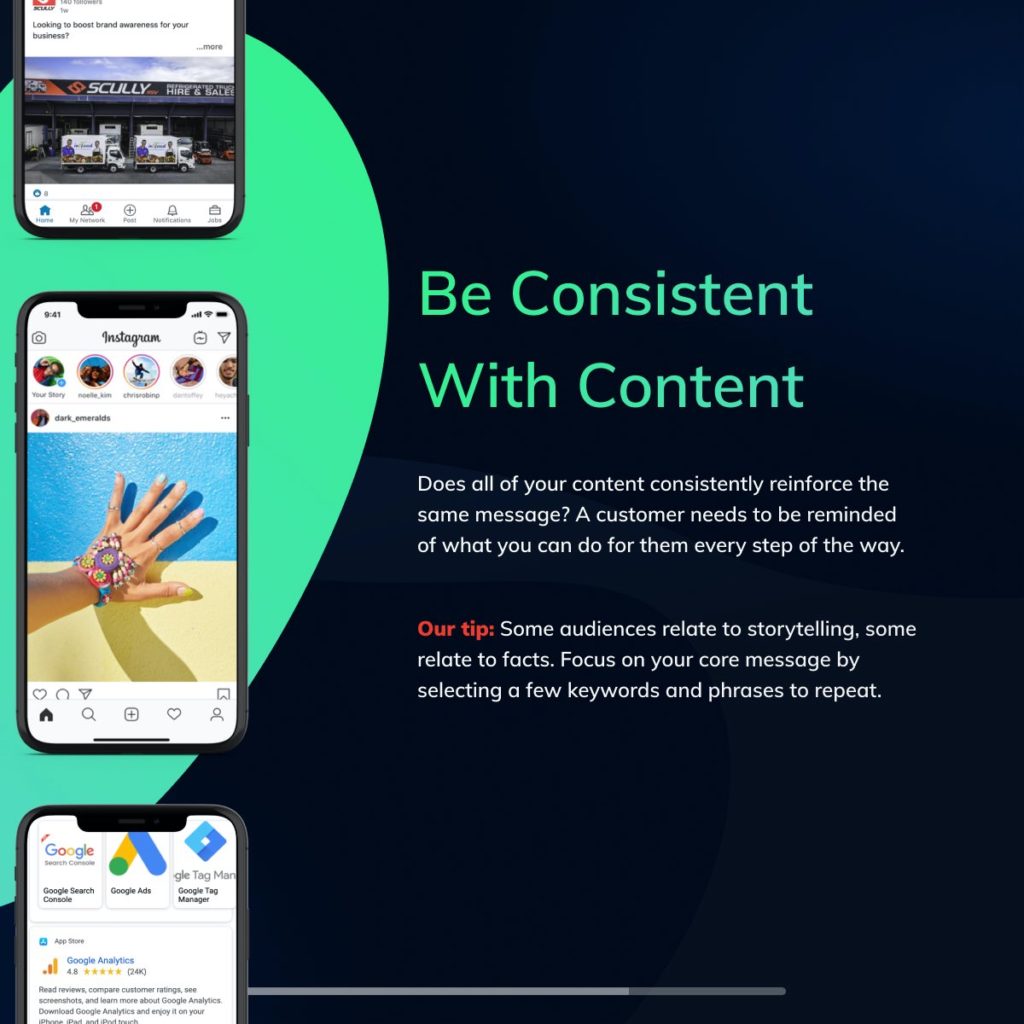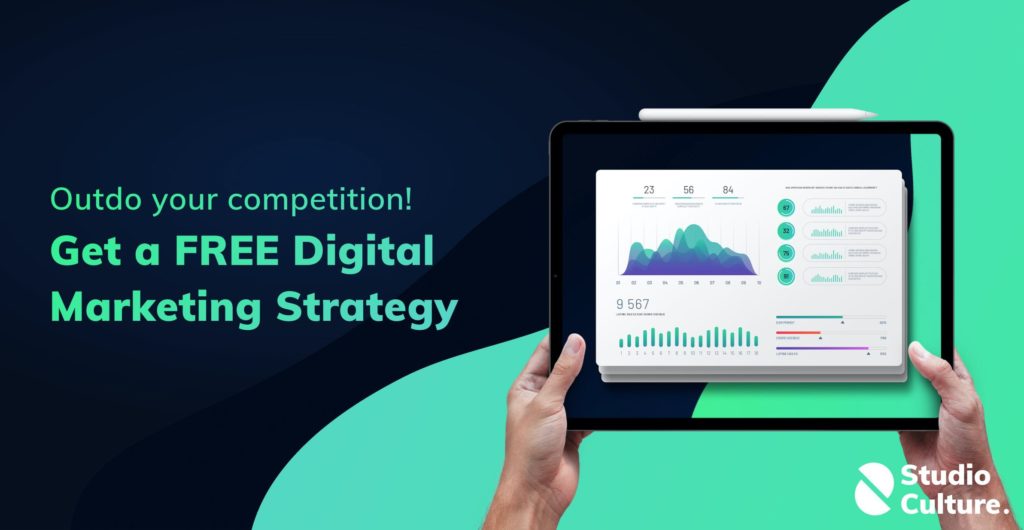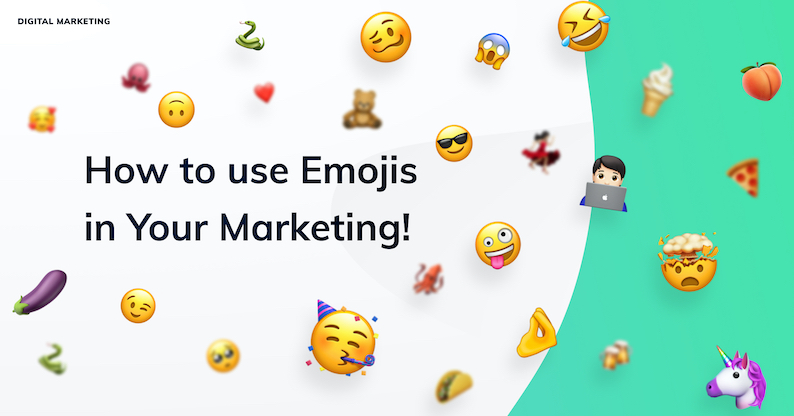Deciding how to market your business online is a critical step for all businesses looking to transition to the digital world. Simply moving your products or services online won’t do. You need a way to tell people you’ve moved online, and the tricky part is figuring out how.
Let Us Guide You
As every business is unique, there’s no clear way to define the ‘how’ without knowing exactly who you are, what you do, and what you plan to achieve (you can chat with us to get a free marketing starter kit!). If you don’t need a handy starter kit, that’s cool, there’s one thing we can do to guide you in the right direction, and that’s teaching you how to put together your own plan for online marketing.
Step One of How to Market Your Business Online: Create A Plan!
The first step of deciding how to market your business online is to create a digital marketing plan! No matter the industry or size of your business, every great digital marketing plan follows a few key steps. These help you to implement online marketing tactics that are purposeful and eliminate the guesswork from your action plan. The following steps are what you need to put together your very own marketing plan.
Step Two: Set a Specific Goal
When we say set a goal, we want you to really dive into what you want to achieve and specify each key aspect of how this goal will be achieved. A foolproof way to check that your goal is a good one is if it has these key features about it.
- It’s specific to your business.
- It’s measurable by means of analysis.
- It’s attainable given your current position.
- It’s relevant to your capabilities and,
- It can be achieved in a timely manner.
This is defined as a SMART goal. Let’s take a look at a general business goal and how we can refine it to achieve the above. For example, you might want to increase brand awareness for your business. This goal is a good starting point, you just need to figure out the details before deciding how to market your business online.
Example Goal: Increase Brand Awareness
- One way to increase brand awareness is through social media marketing, as content shared on social media platforms is accessible to large audiences. Content sharing gives people an idea of what your brand is all about. A specific goal related to social media marketing could be, “I want to increase the number of people engaging with my social media content, to 100 people per post.” To do this, you decide “I will analyse my past content to see which received the most likes/comments/shares on each platform and use this information to craft relevant future content. I will also increase my post frequency from 3 to 5 posts per week on Instagram and Facebook.”
- A measurable metric to gauge brand awareness are likes, comments and shares on organic social posts. This metric then becomes your goal, for example, 100 likes, comments and shares on each post.
- To make this attainable, you need to look at your current results (this becomes your benchmark for when you analyse your campaign). If you are already receiving around 75 engagements per post, an increase of 25 engagements per post is most likely achievable. Your business also needs the means to achieve what you have set out. In this case that means having the time available to analyse your past content and increase your post frequency from 3 to 5 per week. Don’t overstretch beyond what’s possible.
- Relevant means that your goal is relevant to what you actually want to achieve for your business, which in this case is increased brand awareness. If your overall goal was related to increasing registrations/signups or generating leads, this wouldn’t be appropriate as it’s not relevant.
- Setting a time frame to achieve your goals makes it timely. For example, you may aim to achieve this increase in engagements over a three month period. This helps to keep you accountable and also track your progress over the course of three months.
So, now that you’ve defined these ideas, you’ve created a SMART goal! In our example case, the SMART goal would be, “over the course of three months, I will increase my social media engagement to 100 likes/comments/shares per post, by increasing my post frequency and the relevancy of my content shared to my audience on each platform.”
Step Three: Get to Know Your Audience
Your audience is central to your business and your brand. Knowing your buyers will directly impact how to market your business online as you have to centre your marketing around how to attract, engage and convert your audience.
The first step of getting to know your audience is market research. This will not only help you identify the demographics and locations of your target audience, but also their opinions, interests, personality traits and values. Research can be in-depth such as conducting surveys or interviews, or you can turn to digital data such as Facebook Insights (here you can view demographic data about your audience and how people are engaging with your page) statistical agencies like the ABS, data acquired from your past ad campaigns and Google keyword searches.
Using this information, you can then outline your buyer’s personas. This may include information such as their:
- Interests
- Pain points
- Priorities
- Goals
- Concerns, and
- Personality traits
Understanding all this customer information will help you to create a great user experience, tailor your content to your audience and craft the perfect message to encourage your users to take action.
Step Four: Use More Than One Platform, and Integrate Them
It can be hard to know which digital platform or marketing method will be the best for marketing your business. There’s your website, SEO, Google Ads, organic social media (Instagram, Facebook, LinkedIn, TikTok, Snapchat, Twitter etc.), paid social ads, email, landing pages and more.
Selecting the platforms that will be the most effective for your business depends firstly on your goals, and secondly, where your audience is. You wouldn’t want to pay for advertising on TikTok when your target market is small business owners, who are typically 45+ and prefer to use Facebook. You also wouldn’t want to put hours into creating social content and building brand awareness when your digital campaign goal is to generate sign ups or registrations. In that case, using Google Ads or social ads with a lead magnet (e.g. a discount or offer) would be a much more direct way to achieve your lead generation goal.
Additionally, different platforms and marketing methods often work best when used in combination. For example, when considering how to market your business online, you may decide that social media is the best way to reach your target audience. And while this may be true for your business, it doesn’t mean that you should neglect email marketing as a form of communication. Social media and email marketing are mutually beneficial. Email marketing helps your database find you on social media, while social media is a great way to build your email list. Integrating these types of marketing will help you to achieve better results.
Communicating to your audience on more than one platform also helps you to achieve a more recognisable brand image which stays at the front of your customer’s mind. It’s also a way to ensure that you’re catering to each unique persona, whether they prefer social media or email, using both platforms guarantees that your business is always available to them.
Step Five: Decide Your Message and Keep it Consistent
Whether you choose a business-specific message or a campaign-specific message, it should remain the same between all platforms you choose to market your business. A great example of a company that does this is Bunnings. You’ve likely heard the slogan “lowest prices are just the beginning.” The best thing about this messaging is that they do everything in their power to continually reinforce the message, for example, they offer a price match guarantee in store.
If you are stuck on what your messaging should be, we recommend thinking about your businesses unique selling points (USPs) and writing these down as a starting point. This could be related to price (as in the Bunnings example above), the products that you stock, the benefits people experience from using your product/service, your location or your business model. Your USPs are the building blocks of your message.
One way to help narrow this down is to think about what aspects of your business your customers compliment the most, or ask yourself “why do customers recommend you to others?” Another way to pinpoint the most effective messaging is to test different options (e.g. price vs. benefit), by posting on social media or sending emails to your customer database, and analysing which message performs best.
If you run a specific campaign, for example offering a discount to gain more sales or clear out stock, it’s important to keep continuity in your messaging. Whether it’s the price or the benefit of the product, test what works with your audience and then stick to it. You also need to make sure your message is clear and easy to understand! The last thing a customer wants is to see a discounted offer for 30%, only to reach the website and see that most products are actually only on special for 5% off. This will leave a bad impression and deter the customer from shopping with you in the future.
The same principle also applies to your visual content. Stick with what works and keep it consistent. Changing your colours and fonts across platforms can confuse your audience and result in your business having a less recognisable brand identity.
For More Online Marketing Advice, Contact Studio Culture
If you’d like to know more about how to market your business online, feel free to get in touch! Otherwise, let us do the hard work for you. Get a FREE marketing starter kit which includes an example of a marketing campaign by a competitor, a SMART goal for your next campaign, one key message you can use, and a recommendation of a campaign unique to your business!
Let Us Guide Your Marketing
